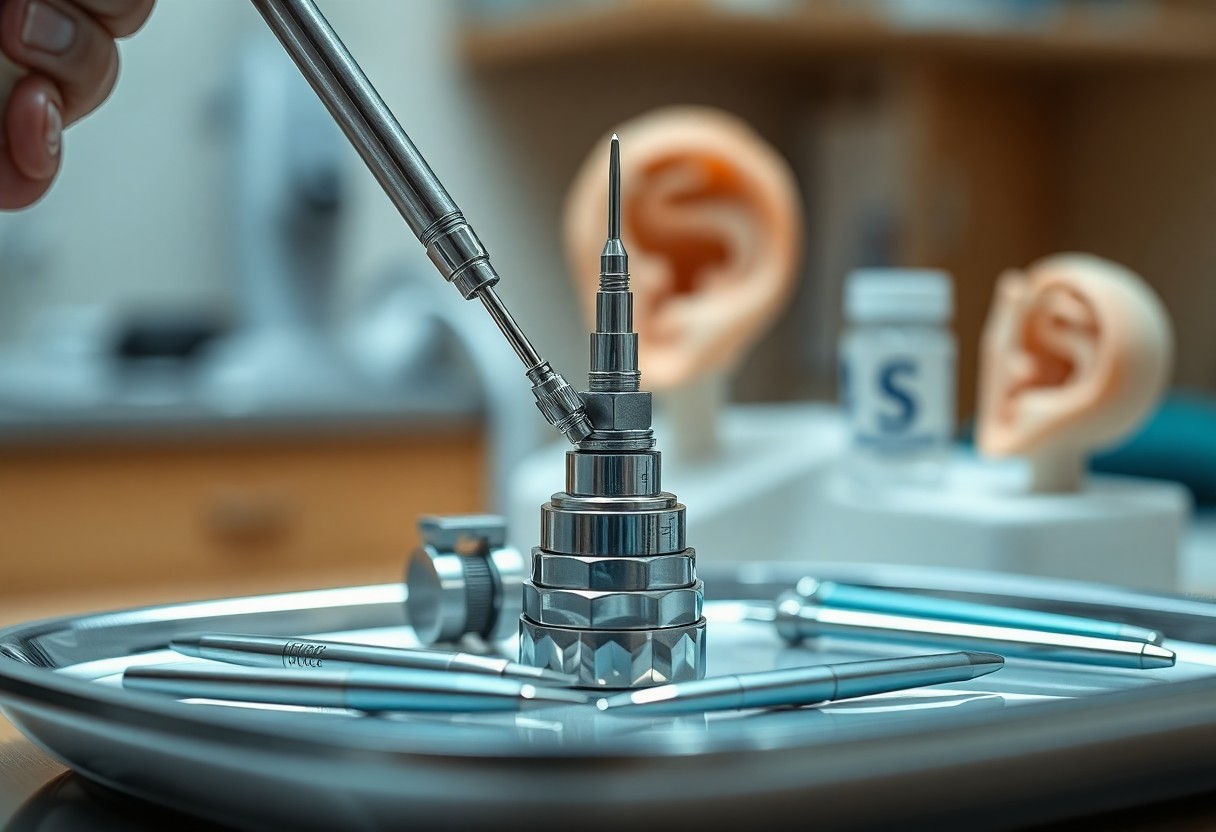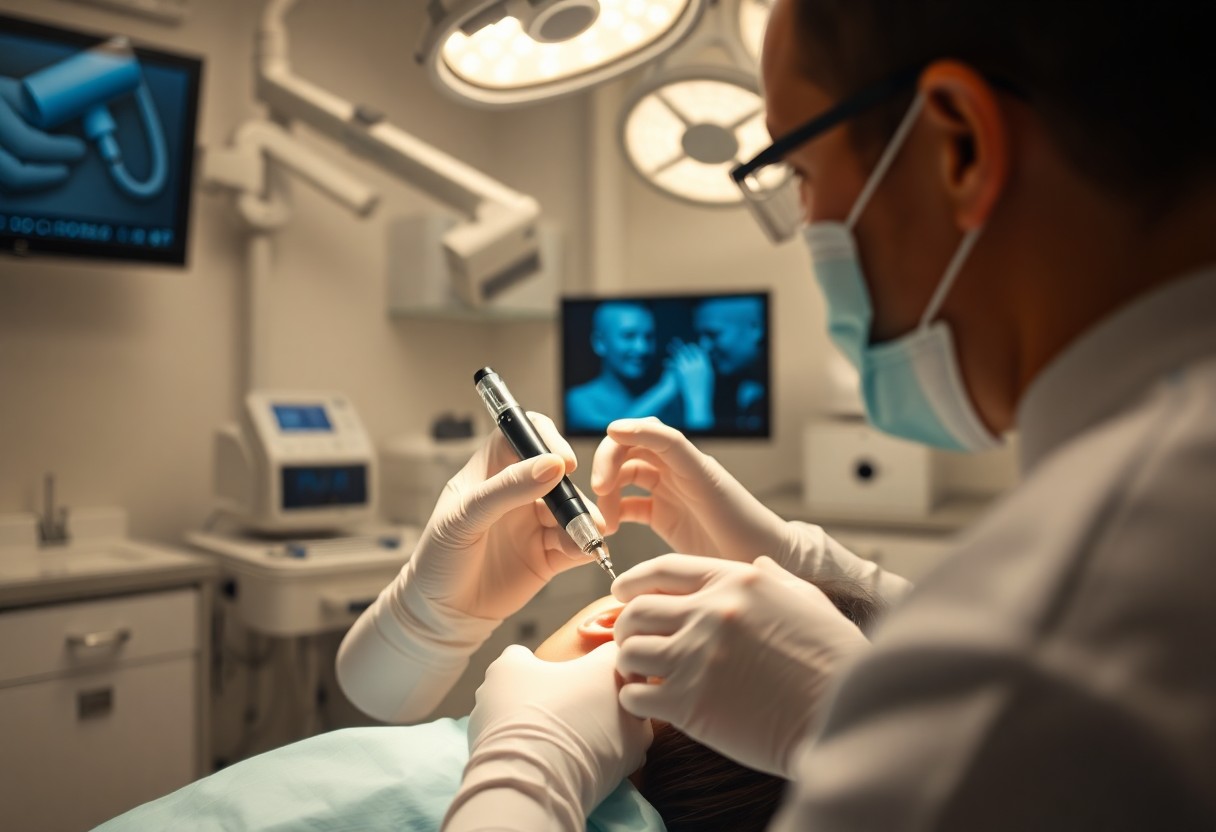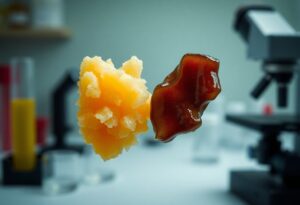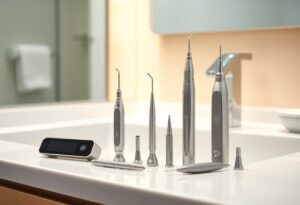Microsuction is an advanced technique for safely and effectively removing earwax and other debris from your ears. In this guide, you’ll learn about the benefits of microsuction and how modern removal devices enhance the safety and efficiency of the process. Understanding these methods can empower you to make informed decisions about your ear health and choose the right solution for your needs. Explore how these innovative techniques can improve your overall hearing care experience.
Key Takeaways:
- Microsuction is a safe and effective method for earwax removal, minimizing the risk of damage to the ear.
- Modern removal devices enhance precision and comfort during procedures, improving patient experience.
- Proper training and understanding of equipment are crucial for maximizing the benefits of microsuction techniques.
The Evolution of Ear Wax Removal
Historical Techniques and Their Limitations
Traditional ear wax removal methods, such as ear candling and using cotton swabs, often do more harm than good. Ear candling poses significant safety risks, potentially causing burns or obstructing ear canals with wax residue. Cotton swabs can push wax deeper into the ear, leading to impaction and infection. Such techniques lack precision and have led to countless cases of discomfort and complications, highlighting the need for more effective solutions in ear wax management.
The Advent of Microsuction
Microsuction revolutionized ear wax removal by combining safety, efficiency, and comfort. This technique, which utilizes a gentle suction device to remove ear wax, eliminates the risks associated with earlier methods. Designed with precision in mind, microsuction allows you to have excess wax removed quickly, often without the need for any invasive instruments. This method is particularly beneficial for those who have experienced trauma or have sensitive ears, paving the way for a more patient-friendly approach to ear care.
Introduced in the early 2000s, microsuction quickly gained popularity due to its efficacy and low incidence of complications. You benefit from a clear view of the ear canal through the use of an otoscope, allowing for accurate targeting of wax. Unlike irrigation, which can lead to water exposure and subsequent ear infections, microsuction is a dry method, making it ideal for anyone with a history of ear problems. Clinics that adopted this method reported faster turnaround times, higher patient satisfaction, and reduced follow-up visits, solidifying microsuction as a preferred choice for ear wax removal.
Microsuction: The Procedure Explained
The Equipment Involved
The microsuction procedure relies on specialized equipment designed for safety and effectiveness. You will encounter a microscope, which provides visualization of the ear canal, and a suction device capable of gentle yet powerful suction. Other tools include a variety of suction tips to suit different ear canal anatomies and an ear wax loop for manual removal of stubborn debris. This equipment ensures precision and minimizes discomfort during the procedure.
The Step-by-Step Process
During microsuction, you can expect a methodical approach to effectively remove earwax. First, your clinician will assess your ear using a microscope, ensuring visibility and safety. Next, the suction device is carefully positioned in your ear canal to dislodge and extract the wax. The process is monitored closely, allowing for adjustments as necessary based on your comfort level and the amount of wax present.
Step-by-Step Process Overview
| 1. Assessment | Your ear is examined with a microscope. |
| 2. Preparation | The suction device and tools are prepared. |
| 3. Suction Application | The suction is applied to extract the earwax. |
| 4. Monitoring | Your comfort and progress are continuously monitored. |
| 5. Completion | Once finished, the clinician will evaluate your ear for any remaining debris. |
The step-by-step process requires your active participation, especially during the comfort checks and adjustments. You may feel slight vibrations or sensations as the suction is applied, but the procedure is generally well-tolerated. Following the operation, your clinician will provide aftercare instructions and may recommend follow-up appointments if wax buildup is recurring.
Advantages of Microsuction Over Traditional Methods
Safety and Efficacy
Microsuction offers a safer alternative to traditional ear wax removal methods by minimizing the risk of injury to the ear canal and eardrum. Unlike syringing, which can cause perforations and infections, microsuction uses gentle suction to directly remove wax. Studies have shown that this method effectively clears blockages with a lower complication rate, making it a preferred option for both practitioners and patients.
Patient Comfort and Experience
Your comfort during the microsuction process is significantly enhanced compared to traditional methods. The gentle suction technique minimizes discomfort, reducing anxiety often associated with ear wax removal. Many patients report that the procedure is quick, with most sessions lasting 20-30 minutes, allowing you to resume your daily activities almost immediately.
With microsuction, the procedure is generally more pleasant. You lie comfortably while the clinician uses a small suction device, creating a soft whirring sound rather than the splashing or popping often heard during syringing. The procedure does not involve the mess of water or saline, contributing to a cleaner experience. Furthermore, the immediate relief often felt after wax removal leads to higher patient satisfaction levels. Many patients leave the appointment feeling refreshed and relieved, further emphasizing the benefits of this modern technique over traditional practices.
Innovating Devices: A Look at Modern Removal Tools
Features of Advanced Microsuction Devices
Advanced microsuction devices boast several innovative features that enhance their efficacy and safety. These tools are engineered for precision, ensuring gentle yet effective debris removal without damaging the ear canal or eardrum.
| Variable Suction Control | Allows for tailored suction strength based on individual needs. |
| LED Illumination | Enhances visibility and accuracy during the procedure. |
| Ergonomic Design | Facilitates easier handling for practitioners. |
| Integrated Filters | Prevents debris from clogging the device, ensuring consistent performance. |
Comparison with Conventional Tools
Advanced microsuction devices offer significant advantages over conventional tools, such as syringes and ear spoons. You’ll benefit from targeted suction that minimizes discomfort and maximizes effectiveness compared to outdated methods.
| Method | Precision |
| Syringes | Less accurate; risk of ear damage and discomfort. |
| Ear Spoons | Potential for injury and incomplete removal of wax. |
| Microsuction Devices | Highly precise; reduces risk of injury while ensuring complete removal. |
Your choice of ear cleaning tools greatly influences patient safety and comfort. Conventional methods often lead to complications like perforation or vertigo, whereas advanced microsuction techniques deliver more precise results. Studies indicate that patients report less discomfort and better outcomes with microsuction procedures compared to traditional methods, highlighting its superiority in contemporary medical practice.
| Patient Satisfaction | Microsuction: High; Syringes: Moderate |
| Risk of Complications | Microsuction: Low; Syringes: Moderate to High |

Common Myths and Misconceptions
Debunking Ear Wax Removal Myths
Many people believe that ear wax removal must be painful or that all methods lead to damage. In reality, microsuction is a gentle, effective technique with minimal discomfort. Utilizing a suction device allows for precise removal without the risk of pushing wax deeper, dispelling the myth that cotton swabs are the safest option for cleaning your ears.
Clarifying Safety Concerns
Concerns about safety during ear wax removal are common, yet studies consistently affirm that microsuction is one of the safest methods available. Unlike traditional techniques, which may involve instruments that can injure the ear canal, microsuction employs controlled suction, significantly reducing risks associated with ear wax removal.
The effectiveness of microsuction is backed by clinical research, revealing a success rate of over 90% with limited side effects. This technique minimizes trauma and irritation to the ear canal. You can expect quicker recovery times and a lower likelihood of complications compared to other methods, such as ear irrigation. Opting for a trained professional to perform the procedure further enhances safety, as expertise ensures that your comfort and health remain paramount throughout the process.
Best Practices for Practitioners
Ensuring Proper Training and Certification
Providers must pursue specialized training and obtain relevant certifications to perform microsuction effectively. Courses typically cover important techniques, safety protocols, and equipment handling. Familiarity with anatomy and pathophysiology is equally vital, enabling you to make informed decisions and minimize risks during procedures.
Post-Procedure Care and Follow-Up
Post-procedural care significantly impacts patient outcomes. Instruct patients to avoid inserting objects into their ears and recommend saline drops to prevent infection. Schedule follow-up appointments to assess healing and address any concerns that arise, ensuring patient satisfaction and safety.
Conducting thorough post-procedure evaluations helps in monitoring potential complications like infection or excessive pain. Providing written aftercare instructions can reinforce verbal guidance, leading to better adherence. Encourage patients to report any unusual symptoms promptly, thereby facilitating timely interventions if needed. Incorporate routine follow-ups to build trust and ensure long-term success in patient relationships.

The Future of Ear Care: Trends and Expectations
Emerging Technologies in Ear Health
New advancements in ear health technology continually reshape how you approach ear care. Innovations like smart monitoring devices and AI-powered diagnostic tools provide real-time data and customizable feedback for better hearing health management. These tools not only enhance the accuracy of diagnoses but also empower you with at-home monitoring capabilities, transforming the way you interact with healthcare professionals.
The Role of Telehealth in Ear Care
Telehealth significantly alters your engagement in ear care by offering convenient access to specialist consultations. You can now seek advice, receive diagnoses, and even undergo follow-ups without the need for an in-person visit, which reduces wait times and increases accessibility. This trend reflects a broader move toward patient-centered care, allowing you to manage your ear health with flexibility and efficiency.
Telehealth platforms specifically designed for ear care enable you to connect with audiologists or ENT specialists virtually. This approach provides access to expert guidance even from remote locations, making it easier to discuss concerns about hearing loss or earwax buildup. Advanced telehealth tools also offer virtual examinations where specialists can analyze your symptoms and recommend personalized treatment plans, enhancing the overall effectiveness of your ear care routine while saving time and resources.
Summing up
From above, you can see that microsuction and modern removal devices offer an effective, safe method for ear wax removal. These techniques prioritize patient comfort and precision, ensuring you receive care tailored to your unique needs. By embracing these advancements, you position yourself for successful ear health management, reducing the risk of complications associated with traditional methods. As a patient, staying informed about these options empowers you to make decisions that enhance your overall well-being.
FAQ
Q: What is microsuction?
A: Microsuction is a method of ear wax removal that uses a gentle suction device to remove wax accumulations, allowing for a quick and safe procedure under direct visualization.
Q: How does microsuction differ from ear syringing?
A: Unlike ear syringing, which uses water to flush out ear wax, microsuction employs suction to remove it, reducing the risk of infection and discomfort.
Q: Is microsuction safe for all age groups?
A: Yes, microsuction is generally safe for adults and children, though children may require specialized equipment and techniques for comfort.
Q: What modern removal devices are commonly used in microsuction?
A: Common devices include electric suction machines, operating microscopes for visualization, and specific suction tips designed for various ear canal sizes and wax types.
Q: How long does a microsuction procedure typically take?
A: A microsuction procedure usually lasts between 10 to 30 minutes, depending on the amount of wax present and the complexity of the removal process.



